The Best Email Marketing Platforms for Webflow Sites
Find the best email marketing platform for your Webflow site. Compare top tools like Mailchimp, HubSpot, and Klaviyo based on integration, automation, and business needs.

- Best overall: Mailchimp
- Best CRM + sales automation: HubSpot
- Best advanced automation: ActiveCampaign
- Best e-commerce: Klaviyo
- Best budget-friendly: MailerLite
- Best for creators and newsletters: Beehiiv / Kit (ConvertKit)
- Best Webflow-native publishing workflow: Audienceful
Email marketing remains one of the highest-ROI channels in digital marketing, yet not every platform integrates seamlessly with Webflow. If you’re running a lead-generation site or scaling your list, the tools you choose really matter.
In this guide, we’ll walk you through the best email marketing platforms for Webflow sites – what works, what to watch out for, and which might be the best fit for your business.
How do I choose the right email platform for Webflow?
Decision guide
Choose based on your business type and automation needs:
Quick webflow integration matrix
Paddle Creative tip:
For maximum automation power, choose ActiveCampaign or Klaviyo.
Platform-by-platform breakdown
1. Mailchimp
Mailchimp is widely used for its simplicity and fast setup. It offers an intuitive drag-and-drop email builder, a diverse range of templates, and reliable basic automation features. The native Webflow integration enables you to send form submissions directly to your audience without the need for additional tools, making it a strong choice for small businesses and those new to email marketing.
Best for: Small businesses and simple Webflow setups
Integration: Native Webflow forms
Pros:
- Easy setup
- Solid automation + templates
Cons:
- Pricing increases quickly
- UI feels older than newer tools
Choose if: You want fast, simple Webflow → email without Zapier.
Avoid if: You need deep workflows long-term.

Paddle Insight
Most Webflow clients start with Mailchimp or MailerLite, then upgrade to ActiveCampaign or HubSpot as their automation needs increase. The platform you choose should align with your current stage, with some room for growth – not necessarily your aspirations.
2. HubSpot
HubSpot combines CRM, email marketing, automation, and sales tools into a single, unified system, making it powerful for businesses focused on lead nurturing and structured sales processes. Its integration with Webflow allows forms and customer activity to sync directly into the CRM, giving a clear view of each contact’s journey.
Best for: B2B, lead-gen, agencies, sales-driven teams
Webflow integration: Webflow App + CRM syncing
Pros:
- Tight CRM + form tracking
- Advanced sales + marketing flows
Cons:
- More expensive as you scale
- Overkill for small solo sites
Choose if: You’re running a sales-led funnel.
Avoid if: You don’t need CRM complexity yet.
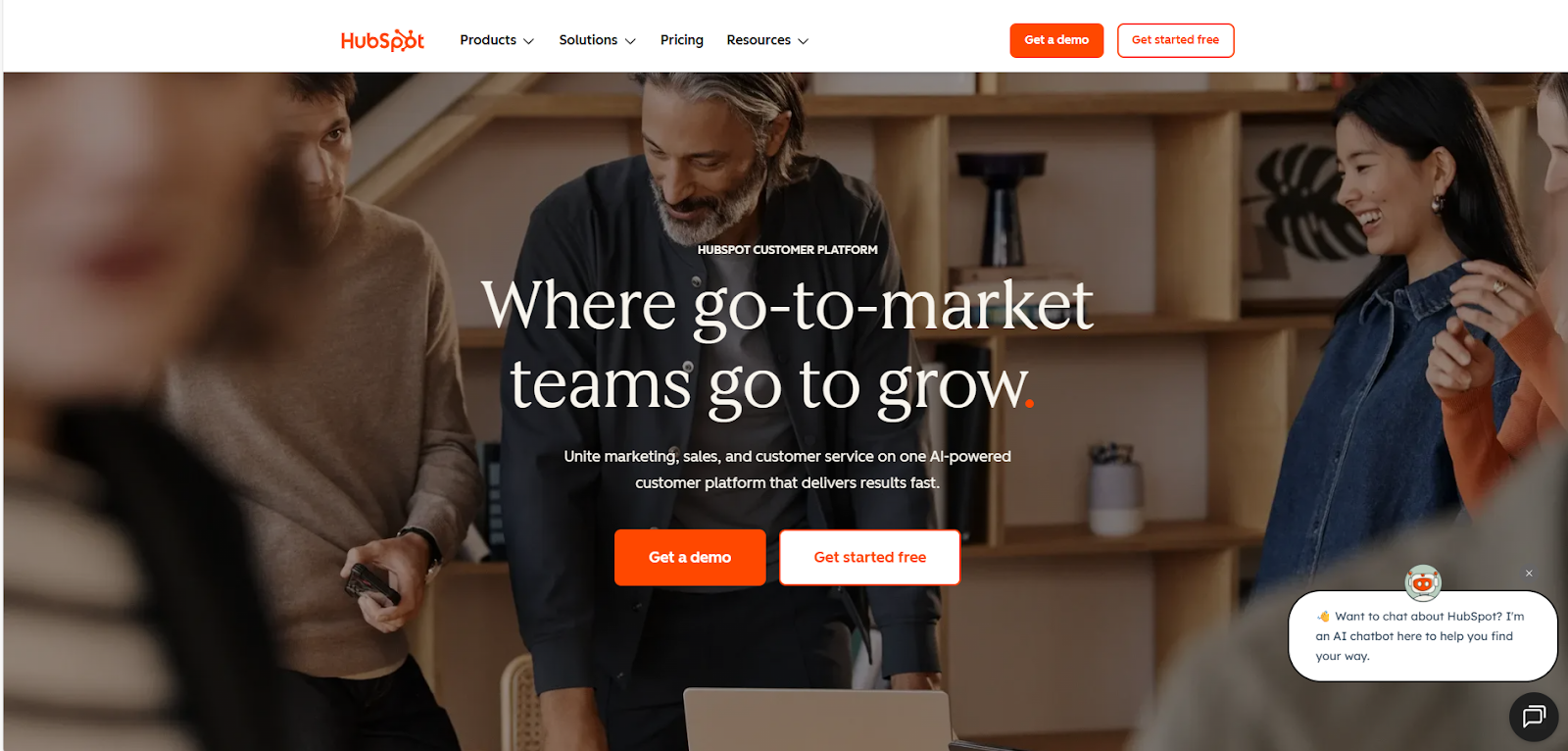
3. ActiveCampaign
ActiveCampaign is known for its powerful automation and deep segmentation capabilities, making it ideal for brands running advanced lifecycle marketing, scoring leads, and delivering personalised messaging at scale. It integrates smoothly with Webflow via native connectors and automation tools, allowing form submissions and site behaviour to trigger sophisticated workflows. This platform suits teams that want to build smart, behaviour-driven customer journeys rather than just send newsletters.
Best for: Advanced automation and segmentation
Integration: Webflow App + automation platforms
Pros:
- Deep segmentation + triggers
- Great for mature lead funnels
Cons:
- Steeper learning curve
- Interface feels dated
Choose if: You have nurture funnels, lead scoring, or multiple segments.
Avoid if: You want a super-simple setup.
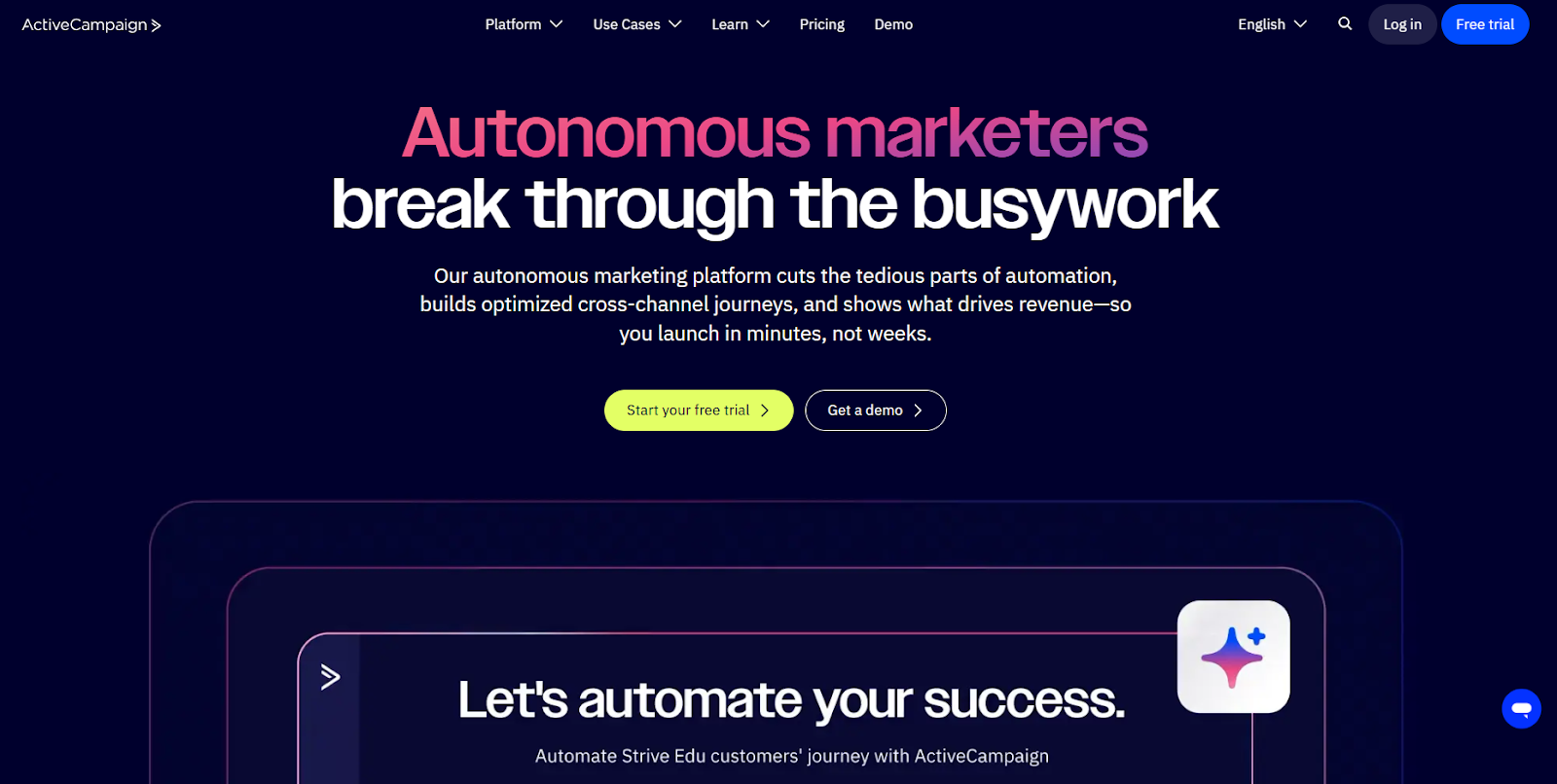
4. GetResponse
GetResponse combines email marketing, landing page creation, automation, and webinar tools into one platform, creating a flexible environment for multi-channel lead generation. It supports connections to Webflow through native and third-party integrations, providing a good balance of features for teams that want more than basic email without managing multiple tools. It works particularly well for marketers running campaigns across content, funnels, and ads.
Best for: Marketing teams wanting multi-function tools
Webflow integration: Native + third-party
Pros:
- Value for features
- Good automation
Cons:
- Editor isn’t the slickest
- Less e-comm-focused
Choose if:
You want a solid, all-in-one tool that combines email, landing pages, automations, and lead funnels in one place – especially for marketing teams running campaigns across multiple channels.
Avoid if:
You’re an e-commerce brand needing deep revenue tracking, or you want the most modern UI and builder experience.
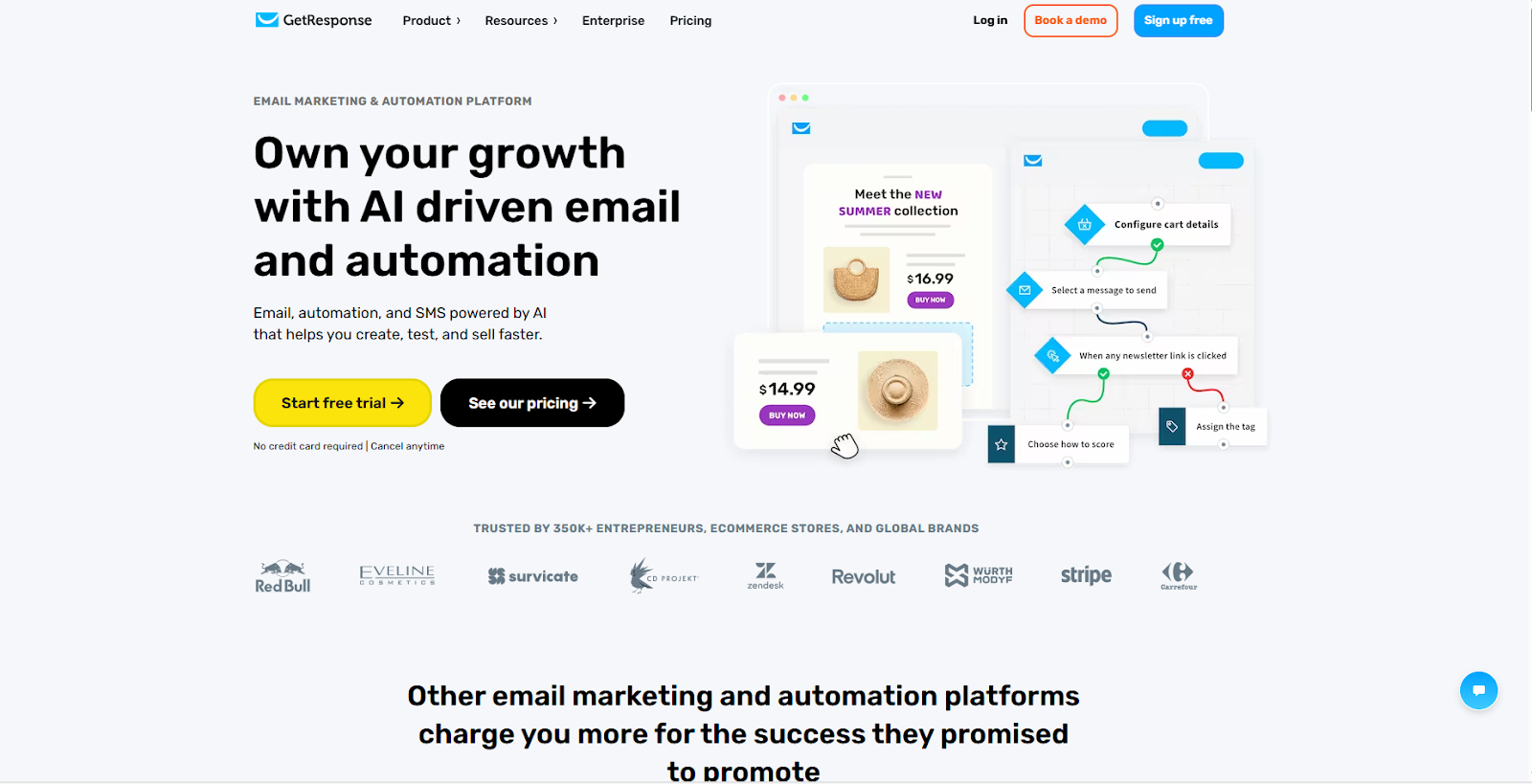
5. MailerLite
MailerLite focuses on simplicity and modern design, giving startups and small businesses an easy way to create landing pages, send campaigns, and automate email sequences without a steep learning curve. While it does not have a direct Webflow integration, it connects smoothly through Zapier or Make, making it suitable for early-stage marketers who want clean execution, strong deliverability, and excellent value before upgrading to a more advanced system later on.
Best for: Startups, small businesses, budget-conscious
Webflow integration: Zapier / Make
Pros:
- Beginner-friendly
- Very cost-effective
Cons:
- No native Webflow integration
Choose if: you’re an early-stage company or keeping your stack lean.
Avoid if: You require in-depth CRM functionality.

Paddle Insight
Tools matter less than your setup. Tagging contacts correctly in Webflow forms and mapping events properly into your email platform will make a greater difference than the choice of platform itself.
6. Klaviyo
Klaviyo is built for e-commerce growth, pairing advanced segmentation and automation with detailed revenue tracking and customer insights. Although its Webflow connection typically requires Zapier or custom setup, it delivers a powerful engine for abandoned-cart flows, personalised product recommendations, and repeat-purchase nurturing. It is ideal for brands selling physical or digital products that want enterprise-level ecommerce automation without the complexity typically associated with it.
Best for: Webflow e-commerce, DTC brands
Webflow integration: Custom forms / Zapier
Pros:
- Revenue attribution + deep segmentation
- Shopify-friendly if a hybrid store
Cons:
- Expensive at scale
- Overkill for service businesses
Choose if: You sell physical or digital products.
Avoid if: You’re B2B or service-based.
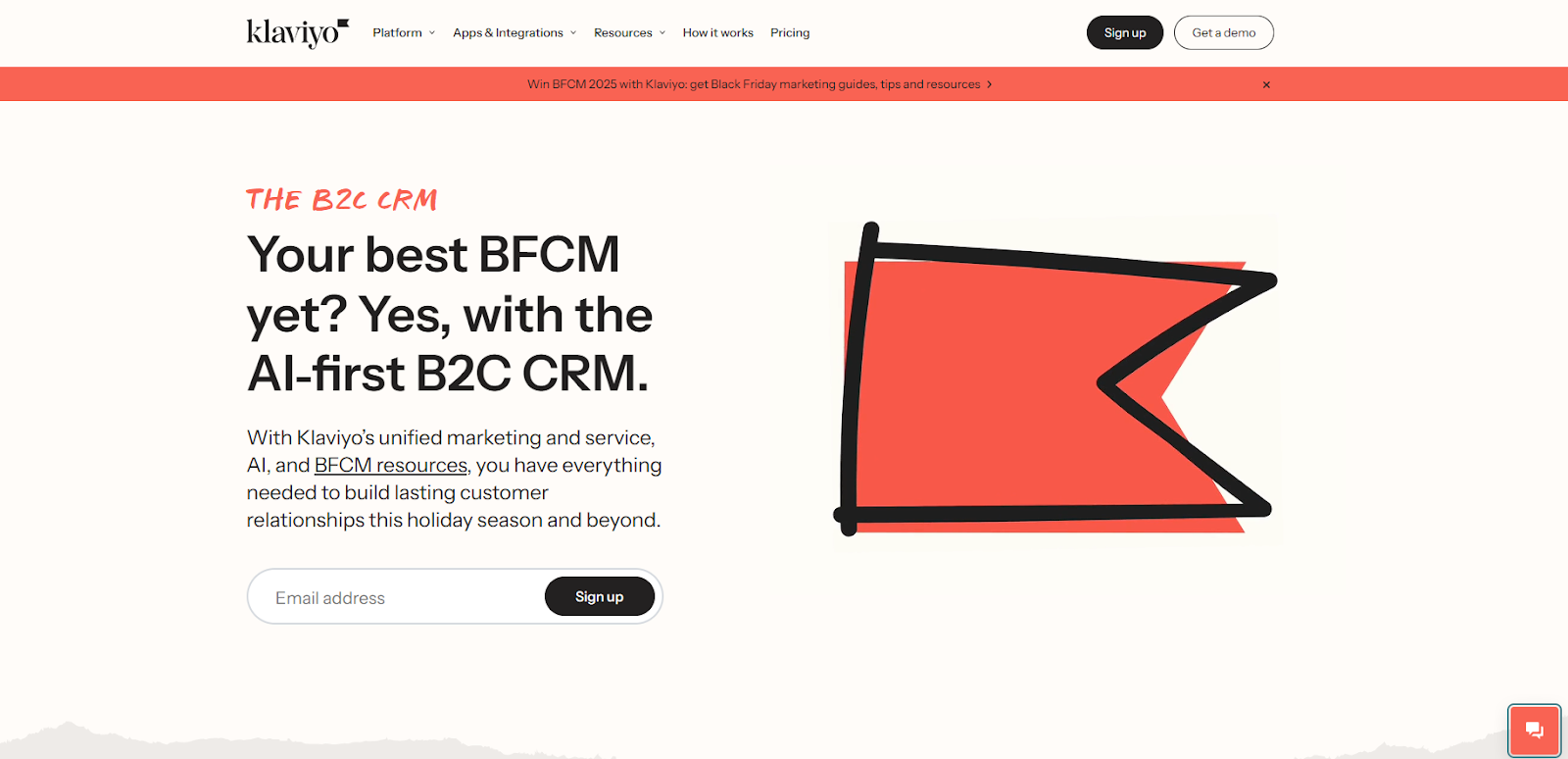
7. Beehiiv
Beehiiv is designed for newsletter-first businesses and creators who want to write, publish, and monetise content in the same ecosystem. Although it connects to Webflow through API or automation tools, the platform excels in its editorial experience, audience growth features, and built-in monetisation options, such as paid subscriptions and referral programmes. It is especially strong for founders and media-style brands growing audience-led businesses.
Best for: Newsletter-driven brands, creators
Webflow integration: API / Zapier
Pros:
- Publishing + monetisation
- Simple setup
Cons:
- Limited complex automation
Choose if: Your model is newsletter-led.
Avoid if: You need complex sequences.

8. Buttondown
Buttondown is a minimal and privacy-focused email tool tailored for technical creators, indie publishers, and writers who want full control without distractions. It can be integrated with Webflow using API connections or manual setup, making it an appealing option for users who prefer flexibility over ready-made templates. Its stripped-back approach emphasises simplicity, speed, and transparency, particularly for audiences who value a clean, writing-first workflow.
Best for: Tech creators, simple newsletters
Webflow integration: API/manual
Pros:
- Fast, privacy-first
Cons:
- Not beginner-friendly
- Limited templates/features
Choose if: You want a minimal, indie newsletter tool.
Avoid if: You want templates + visual workflows.

9. Kit (ConvertKit)
Kit caters to creators, educators, and solo entrepreneurs looking to build an audience and nurture subscribers toward digital product sales and launches. It connects to Webflow via automation platforms like Zapier, enabling tags, forms, and funnels to work alongside Webflow CMS content. Its strength lies in ease of use, high-converting opt-in tools, and intuitive automation paths for delivering courses, drip sequences, and audience segmentation.
Best for: Course creators, solopreneurs
Webflow integration: Zapier / Make
Pros:
- Great for digital product funnels
- Intuitive automations
Cons:
- Less suited to B2B lead management
Choose if: You're building a creator funnel.
Avoid if: You need sales CRM.
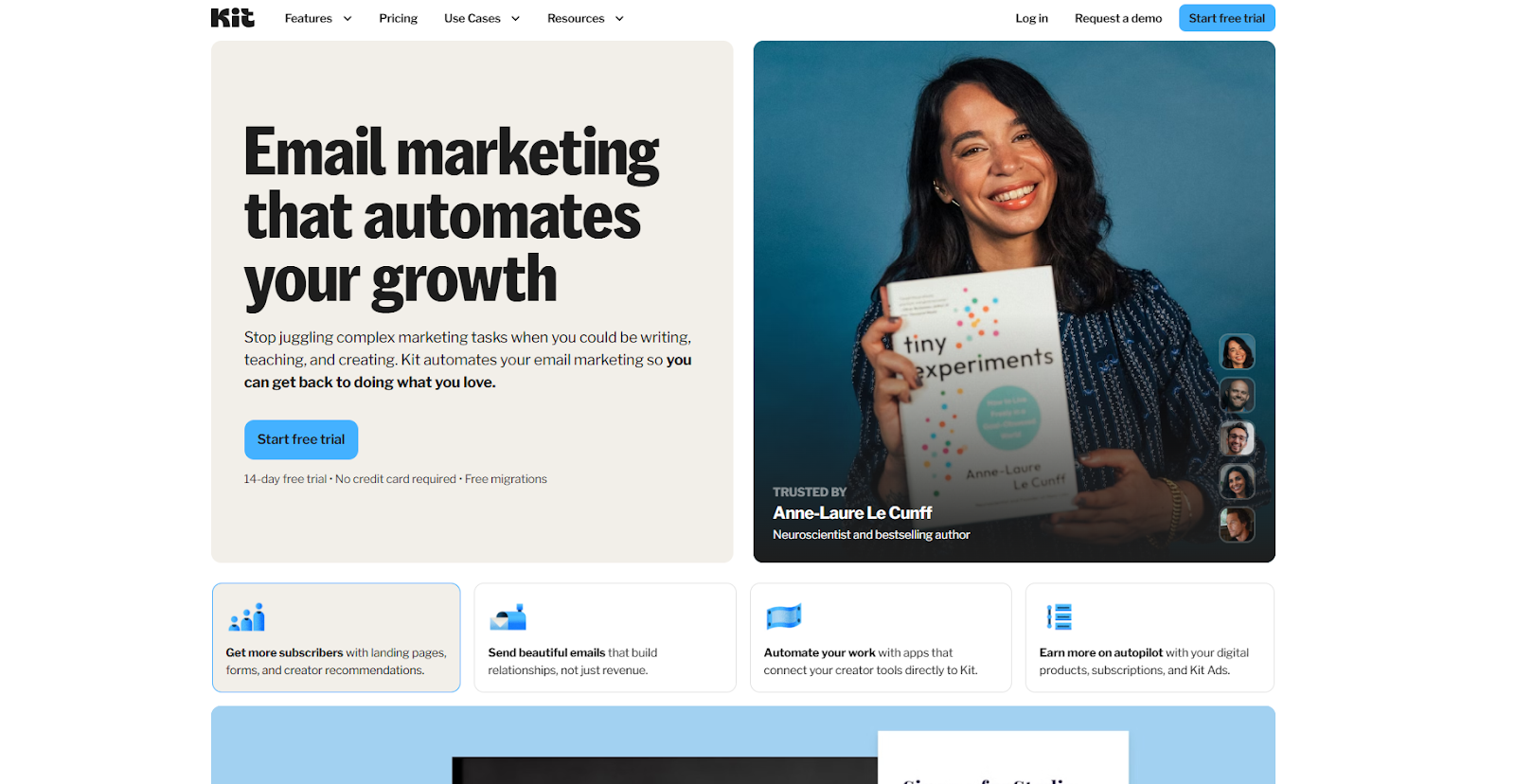
10. Audienceful
Audienceful is designed specifically to work alongside Webflow, making it uniquely positioned for teams using Webflow CMS as their publishing hub. It enables content, forms, and audience data to sync fluidly between platforms, simplifying list growth and newsletter management. With a clean interface and a focus on modern workflows, it suits creators and businesses that want email to extend their Webflow content strategy without complex integrations naturally.
Best for: Webflow-native content workflows
Webflow integration: Native/first-party oriented
Pros:
- Designed for Webflow content workflows
- Modern, clean UX
Cons:
- Less mature than incumbents
Choose if: You're publishing from Webflow CMS.
Avoid if: You need enterprise CRM.


Author
Fact Checked By
FAQs
Mailchimp and HubSpot provide the smoothest setup if you're connecting Webflow forms without using Zapier/Make. MailerLite, Beehiiv, and Kit require automation tools.
Klaviyo is the strongest choice for e-commerce automation and revenue tracking. Shopify + Webflow hybrid? Still Klaviyo.
Only for tools without native Webflow integration (MailerLite, Beehiiv, Buttondown, Kit). HubSpot, Mailchimp, ActiveCampaign and Audienceful connect directly.
MailerLite is the best low-cost option with solid automations. Mailchimp works too, but the cost increases as your list grows.
No – Webflow manages forms and content, not ongoing email campaigns or automations. You’ll always need a separate email platform.

.svg)
.svg)





.jpg)

%20(1).jpg)
%20(1).jpg)
%20(1).avif)



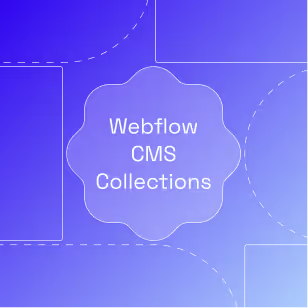



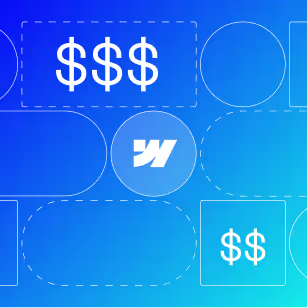
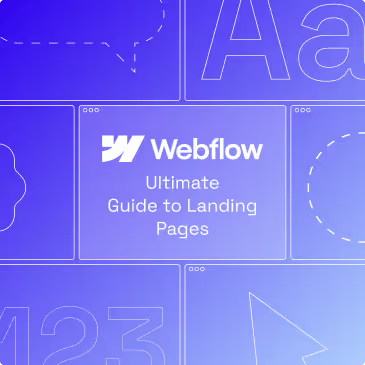
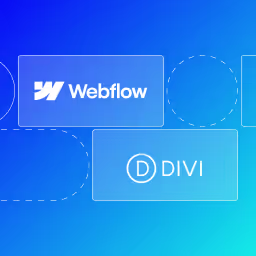

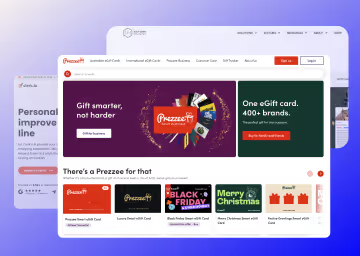

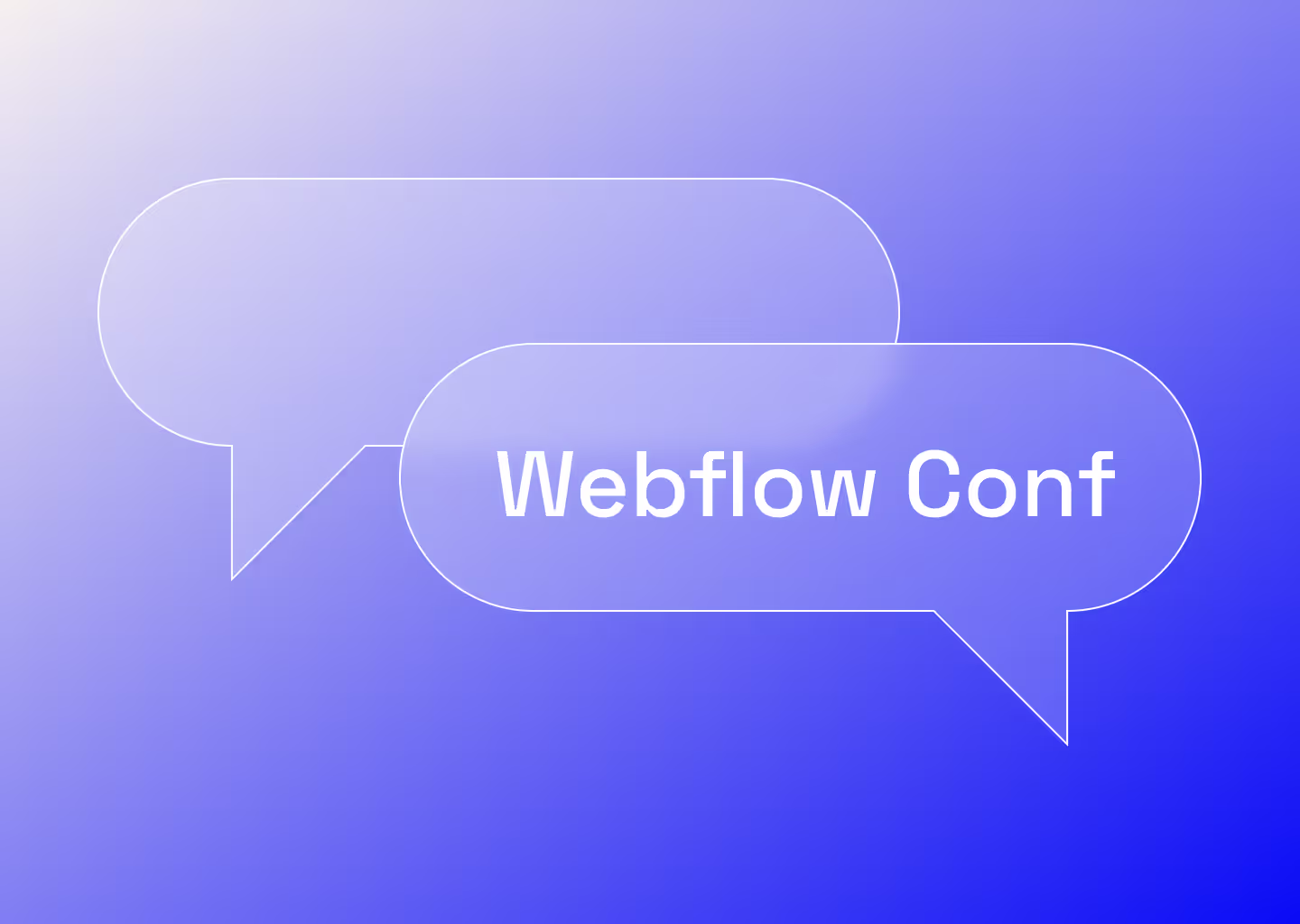

%20(2).avif)
.avif)



.avif)

.avif)
.avif)
.avif)
.avif)
.avif)
.avif)
.avif)
%2520(1).avif)
%2520(1).avif)
.avif)
%2520(1).avif)
%2520(1).avif)
%2520(1).avif)
%2520(1).avif)
%2520(1).avif)
%2520(1).avif)
.avif)
.avif)



